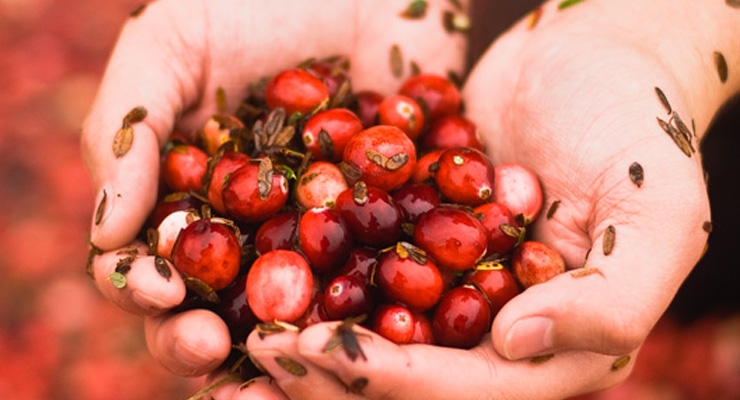Market Updates, Products & Ingredients, Research
Cranberry Study Calls for More Accurate Cranberry Authentication Testing Methods
Fruit d’Or Cranberry Juice was used as the reference material in this eye-opening review of 10 commercial cranberry products.
By: Lisa Olivo

A recent quality analysis of 10 commercially available cranberry products showed that distinguishing and quantifying cranberry PACs within complex mixtures, using chromatographic techniques, is very challenging. The resulting review, published in the journal Food Control, highlighted the limitations of high-performance thin-layer chromatography (HPTLC) and other standard analytic methods.
Three leading industry experts recently discussed the implications of this French review: American Botanical Council (ABC) Chief Science Officer Stefan Gafner, PhD, Complete Phytochemical Solutions CEO Christian Krueger, and RSSI CEO Stephen Lukawski, who also serves as lead sales consultant and partner for Fruit d’Or Nutraceuticals.
“This study is a step in the right direction,” noted Mr. Lukawski. “Studies that investigate the quality of cranberry products are good for the cranberry market, particularly for those who sell high-quality products.” Although Fruit d’Or was not a study sponsor, Fruit d’Or cranberry juice was used as a reference material because of its constituents—including PACs—due to its standardized quality.
Multiple Analyses were Performed
The investigator-initiated study evaluated the quality of 10 commercially available cranberry products, sold in sticks, caplets, tablets and syrups, purchased in French pharmacy stores. Half of the products were labeled to contain single-ingredient cranberry; the other five contained ingredient combinations including blueberry, grape seed, bell heather, and hibiscus. Researchers had no information about the products’ ingredients except what was on the labels.
In addition to HPTLC, the products were evaluated using ultra high-performance liquid chromatography combined with mass spectrometry (UHPLC-MS). The total PAC content was determined by UV/Vis spectrophotometry after reacting the products with 4-(dimethylamino) cinnamaldehyde (DMAC).
The Results were Highly Variable and Difficult to Interpret
Upon reviewing the results, Dr. Gafner commented, “The researchers found it difficult to compare cranberry PACs in products that also have other ingredients containing molecules from this class of compounds. My concern is that using HPTLC, or other liquid chromatography-based approaches to determine the authenticity of cranberry supplements becomes very challenging if these supplements also contain PACs from other sources such as heather or hibiscus.”
Added Mr. Krueger, “The authors did a good job at addressing an issue that’s important for the industry: applying analytic tools to assess authenticity and quality of products in the marketplace. One of the challenges of using the UHPLC-MS and HPTLC is that neither of these tools are well-suited for analyzing complex polymeric molecules such as PAC, the unique biologic class correlated with many of the health benefits. While the tools are valuable and have demonstrated utility in being able to identify small molecule components of these particular products, there are still problems with products enriched with PACs.”
Mr. Krueger explained why HPTLC may even have difficulty authenticating PACs in single-ingredient formulations. “For example, both cranberries and blueberries contain A-type PAC and B-type PAC. However, the ratio of A to B is higher in cranberry than blueberry. HPTLC may be able to detect the A-type and B-type dimers but it does not do a good job of quantifying the relative ratios. Additionally, HPTLC is not able to resolve PAC of higher degree of polymerization. This means that cranberry products that are selectively enriched in PAC may not “pass” HPTLC authenticity tests.”
There are Better Ways to Accurately Authenticate PACs
Traceability of finished products to their botanical origin is critical for authentication. Mr. Krueger pointed out that there is a great variability in cranberry ingredients and their PAC composition. He added, “MALDI-TOF mass spectral fingerprinting has higher resolving power than HPTLC and is a ‘fit-for-purpose’ analytic tool for authentication of cranberry PAC. The MALDI-TOF fingerprint is based on PAC structures that are unique to each ingredient. MALDI-TOF has demonstrated ability to quantify the relative proportion of blended PAC-enriched ingredients (e.g. cranberry PAC vs. apple PAC) within 3 percent accuracy.”
Mr. Lukawski concurred, “MALDI-TOF gives Fruit d’Or more accuracy and precision when authenticating our cranberry PACs than either HTPLC or HPLC-MS. The more analytic tools you use, the better you will understand your product. For example, Fruit d’Or has chosen to use DMAC for quantification and to use a number of authentication tests including DNA testing which is well-suited for whole fruit products. Authentication is just one component. We’re also conducting anti-adhesion testing on our ingredients to confirm efficacy.”
Added Dr. Gafner, “Certain supplement manufacturers see only a cranberry powder or extract. One of the advantages with Fruit d’Or is that the company is controlling every step of the process with its vertical integration. If you can see and taste the berry, there’s less concern over authentication versus buying a powdered material from a supplier that isn’t transparent about how their ingredients are grown and processed.” He added that products labeled as cranberry sometimes contain undeclared ingredients. In a partnership with the American Herbal Pharmacopoeia (AHP) and the National Center for Natural Products Chemistry (NCNPR) at the University of Mississippi, ABC has summarized issues regarding herbal ingredient adulteration as part of the ABC-AHP-NCNPR Botanical Adulterants Prevention Program.
Complete Phytochemical Solutions and Fruit d’Or are working with groups such as the ABC to introduce new tools that may help prevent adulteration not just in cranberry products but other botanicals. “We encourage more cranberry suppliers to join us in raising awareness and quality,” said Mr. Lukawski. “There’s peace of mind knowing there are answers to the question marks of adulteration. We have the tools to bring better standardization and efficacy to the cranberry industry. We just need for others to join Fruit d’Or in using them.”
Those interested in learning more about Fruit d’Or Nutraceutical’s farm-to-table processes, including its extensive analytical and efficacy testing, may attend its open house/harvest tour, beginning October 15, 2018, in Villeroy, Quebec, Canada. The ABC will participate. Mr. Krueger will conduct a presentation on current methods and advancements in cranberry testing and authentication and will be available to answer your questions.


